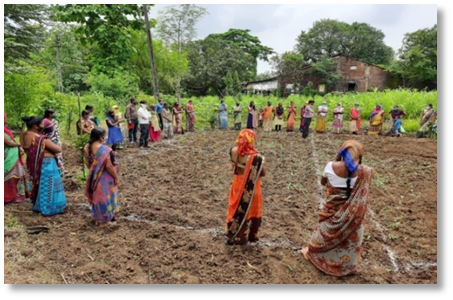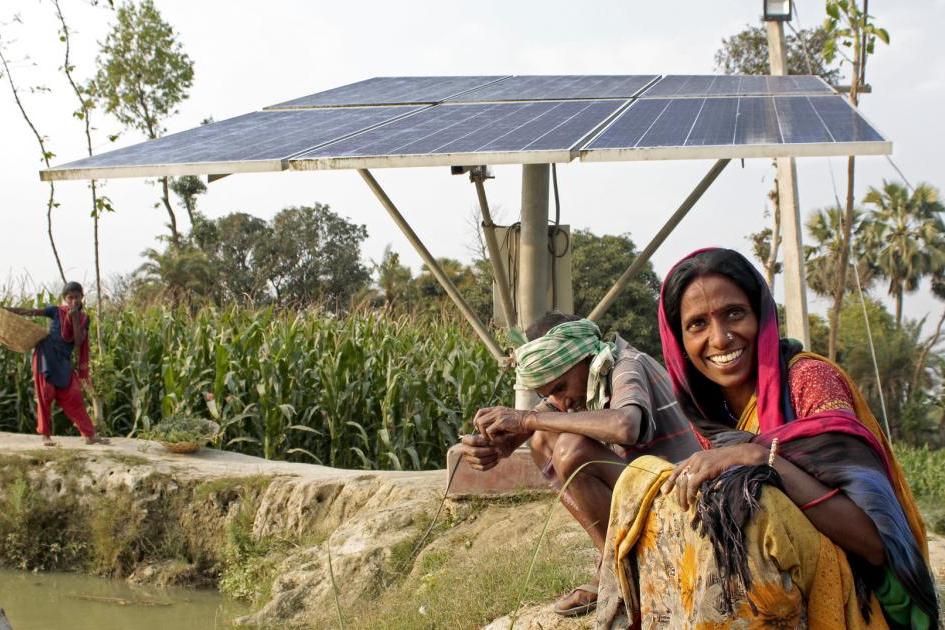During COVID 19 many innovative social projects helped in creating a livelihood support system for people who had their income severely affected due to the movement restrictions and market slowdown.
Atul Foundation’s Atul Nutrition Garden was one such innovative project which helped people in rural areas with new skills so that they increase their income level. The project also resulted in villagers getting nutritious food during the COVID-19 pandemic.
Project background:
Atul Foundation and BAIF Institute for Sustainable Livelihoods and Development (BISLD) envisioned the Atul Nutrition Garden project in four remote villages of Kaprada taluka, Valsad, Gujarat, to improve the nutrition intake by the villagers. The project intervention was based on the need assessment done in the villages taking into consideration pregnant/lactating women, adolescent girls and the households having children between the age of 0 to 5 years.
What was the problem?
The project was based on a need assessment which revealed a glaring lack of proper nutrition among women and children. The selected villages had nearly 98% tribal population who were mostly dependent on agriculture and livestock rearing as a source of income, but the focus was primarily on the farming of crops that fetches good price in the market. The production was solely for income generation, and this failed to address food security and the need for basic nutrients among the villagers. The purpose of the intervention was to combat malnutrition and encourage people to grow vegetables for their daily consumption.
How the project was implemented?
The project was implemented between July 1, 2020, and June 30, 2021, in which 1,000 participants were supported to develop nutrition gardens in their front yards or backyards and 120 participants were assisted in the cultivation of creeper vegetable in their agriculture lands.
The beneficiaries had received seeds and saplings of various vegetables, fruits and medicinal plants, such as okra, cowpea, green matbhaji, alvi patra, brinjal, chili, cucumber, bitter gourd, bottle gourd, sponge gourd, drumstick, guava, custard apple, lemon, curry leaf, lemongrass, mint plant and papaya. The beneficiaries were taught to grow these nutritional vegetables and fruits. They were also trained to prepare organic pesticides and fertilisers, namely, Dashparni ark and Jivamrut from cow urine and cow dung.
What was the impact?
Apart from the availability of adequate nutritious and organic food for consumption, the project proved to be an additional source of income for the families. The household expenditure on food reduced by almost 20-25% as families were using vegetables from their own nutrition gardens. Some of them were able to sell the fresh produce in the market as well. The participants who sold the produce in the market were able to produce nearly 3-4 kgs in every 4 to 5 days, from which they retained nearly 1 kg for self-consumption and sold the rest in the market.
The vegetable production post-monsoon increased cropping diversity in the area. The villagers reported improvement in their health condition after consuming fresh vegetables from the nutrition gardens. The project also helped the beneficiaries avail various government schemes worth INR 14 lacs.
Knowledge building through the nutritional garden activity was one of the intangible benefits that helped the community build an understanding of the importance of a healthy and nutritious diet.
(Note: The above case study is based on the inputs shared by Atul Foundation)









.jpg)




